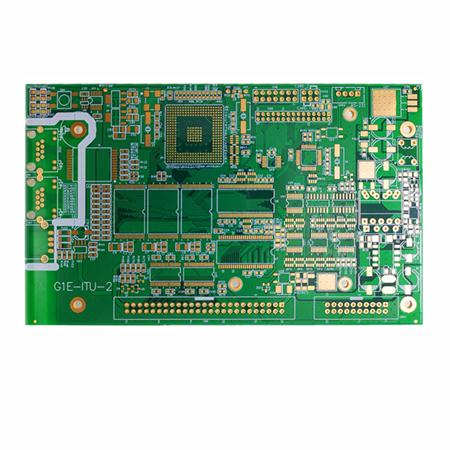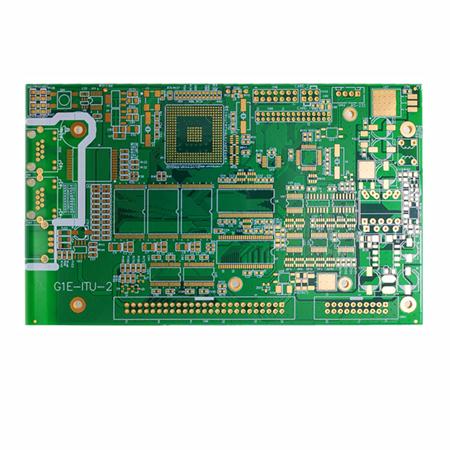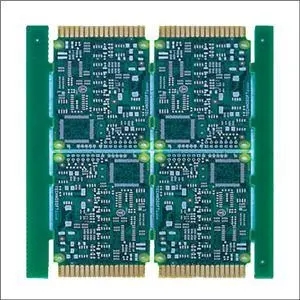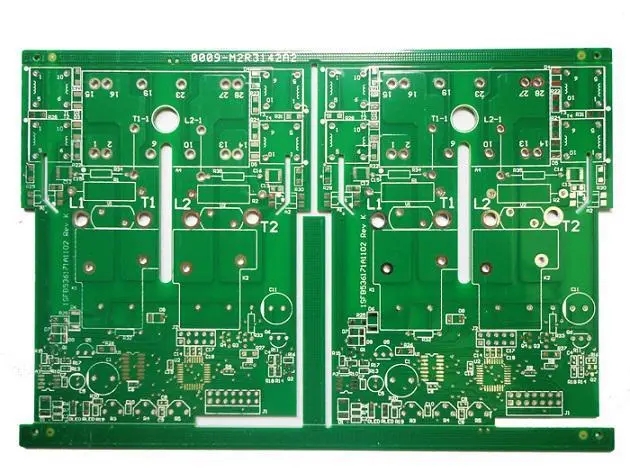
1、 Detection before power on
After a PCB is welded, when checking whether the PCB can work normally, it is usually not to directly supply power to the PCB, but to follow the following steps to ensure that there is no problem at each step before power on.

1 Whether the connection is correct
Check the schematic diagram. The main points to be checked are whether the power supply of the chip and the network node are correctly marked. At the same time, pay attention to whether the network nodes overlap. This is the key point of the check. Another key point is the packaging of the original. The model and pin sequence of the package shall be adopted. The top view shall not be adopted for sealing, especially for non pin packages.
Check the wiring, including wrong wiring, less wiring and more wiring. There are usually two methods for line checking:
Check the installed lines according to the circuit diagram, and check the installed lines one by one in a certain order according to the circuit wiring;
The actual circuit shall be compared with the schematic diagram, and the line shall be checked with the component as the center. Check the wiring of each component pin once, and check whether each pin is on the circuit diagram. In order to prevent errors, the checked wires should usually be marked on the circuit diagram. It is better to test with the buzzer of the ohm gear of the pointer multimeter, and directly measure the component pins, so that the poor wiring can be found at the same time.
2 Installation of components
Whether there is short circuit between pins, and whether there is poor contact at the connection, you can use the diode of the multimeter to detect, and the probe slides on the PCB to detect;
Whether the polarity of diodes, triodes, integrated devices and electrolytic capacitors are connected incorrectly.
Check whether the power interface is short circuited. If the power supply is short circuited before commissioning, the power supply will burn out, sometimes causing more serious consequences. Use a multimeter to measure the input impedance of the power supply, which is a necessary step. Before power on, disconnect a power cord and use a multimeter to check whether there is a short circuit between the power terminal and the ground.
During design, the power supply part can use a 0 ohm resistance as the debugging method. Do not weld the resistance before powering on. After checking that the voltage of the power supply is normal, weld the resistance on the PCB to supply power to the following units, so as to avoid burning the chips of the following units due to the abnormal voltage of the power supply. Protective circuits are added to the circuit design, such as the use of recovery fuses and other components.
3 Installation of components
It is mainly to check whether the polarized components, such as LED, electrolytic capacitor, rectifier diode, etc., and the pins of triode are corresponding.
It is better to conduct open circuit and short circuit tests first to ensure that short circuit will not occur after power on. If the test point is set, you can get twice the result with half the effort. The use of a 0 ohm resistor is sometimes conducive to high-speed circuit testing.
The power on detection can only be started after the above power off detection is completed.
2、 Power on detection
1 Power on observation
After power on, do not be anxious to measure the electrical indicators, but observe whether the circuit is abnormal, such as whether there is smoke, whether there is abnormal smell, touch the external package of the integrated PCB circuit, whether it is hot, etc. In case of any abnormal phenomenon, the power supply shall be turned off immediately, and then turned on after the fault is eliminated.
2 Static commissioning
Static debugging generally refers to the DC test conducted without input signal or only with fixed level signal. The potential of each point in the circuit can be measured with a multimeter. By comparing with the theoretical estimated value and combining the analysis of circuit principle, it can judge whether the DC working state of the circuit is normal, and timely find the damaged or critical components in the circuit. By replacing components or adjusting circuit parameters, the DC working state of the circuit can meet the design requirements.
3 Dynamic debugging
Dynamic debugging is carried out on the basis of static debugging. Appropriate signals are added to the input end of the circuit, and the output signals of each test point are detected in sequence according to the flow direction of the signals. If abnormal phenomena are found, the causes should be analyzed, and the faults should be eliminated before debugging until the requirements are met.
During the test, it is not allowed to rely on feelings and impressions, but always observe with the aid of instruments. When using the oscilloscope, it is better to place the signal input mode of the oscilloscope in the "DC" gear, and observe the AC and DC components of the measured signal through the DC coupling mode.
Through debugging, finally check whether various indicators of the function block and the whole machine (such as signal amplitude, waveform shape, phase relationship, gain, input impedance and output impedance) meet the design requirements. If necessary, further propose reasonable corrections to circuit parameters.
3、 Other work in electronic circuit debugging
1 According to the working principle of the system to be debugged, formulate the commissioning steps and measurement methods, determine the test points, mark the positions on the drawings and boards, and draw the commissioning data record forms, etc.
2 Set up the commissioning workbench, which is equipped with the required commissioning instruments. The instruments shall be arranged for easy operation and observation. Students often do not pay attention to this problem. When making or adjusting the machine, the workbench is very messy, and tools, books, clothes, etc. are mixed with the instrument, which will affect the debugging. Special note: During production and debugging, the workbench must be arranged clean and tidy.
3 For the hardware circuit, the measuring instrument shall be selected according to the system under test, and the accuracy of the measuring instrument shall be superior to that of the system under test.
4 The debugging sequence of electronic circuit is generally carried out according to the signal flow direction. The output signal of the circuit that has been debugged previously is taken as the input signal of the next level, creating conditions for the final unified debugging.
5 For the digital circuit realized by the programmable logic device, the input, debugging and downloading of the source file of the programmable logic device shall be completed, and the programmable logic device and the analog circuit shall be connected into a system for overall debugging and result testing.
6 During the commissioning process, it is necessary to carefully observe and analyze the experimental phenomena and make records to ensure the integrity and reliability of the experimental data.
4、 Precautions during circuit commissioning
Whether the debugging result is correct or not is largely affected by the correctness of the test quantity and the test accuracy. In order to ensure the test results, the test error must be reduced and the test accuracy must be improved. Therefore, the following points should be noted:
1 Use the grounding terminal of the test instrument correctly
All tests shall be conducted with electronic instruments with ground terminal connected to the enclosure. The ground terminal together shall be connected to the ground terminal of the amplifier. Otherwise, the interference introduced by the enclosure of the instrument will not only change the working state of the amplifier, but also cause errors in the test results. According to this principle, when debugging the emitter bias circuit, if it is necessary to test Vce, the two ends of the instrument should not be directly connected to the collector and emitter, but Vc and Ve should be measured respectively to the ground, and then the two should be subtracted. If a dry battery powered multimeter is used for testing, the two input terminals of the meter are floating, so it is allowed to directly jump between test points.
2 The input impedance of the instrument used for voltage measurement must be far greater than the equivalent impedance of the measured location. If the input impedance of the test instrument is small, it will cause shunt during the measurement and bring great errors to the test results.
3 The bandwidth of the test instrument must be greater than that of the circuit under test.
4 Select the test point correctly. When measuring with the same test instrument, the error caused by the internal resistance of the instrument will be greatly different due to different measuring points.
5 The measurement method shall be convenient and feasible. When it is necessary to measure the current of a circuit, it is generally possible to measure the voltage rather than the current, because it is unnecessary to change the circuit when measuring the voltage. The test is convenient. If you need to know the current value of a branch, you can measure the voltage at both ends of the resistance on the branch and get it through conversion.
6 During commissioning, not only should we observe and measure carefully, but also be good at recording
The recorded contents include experimental conditions, observed phenomena, measured data, waveform and phase relationship, etc. Only when we have a large number of reliable experimental records and compare them with the theoretical results, can we find problems in circuit design and improve the design scheme.
5、 Failure during debugging
The cause of the fault shall be carefully found, and the circuit shall not be removed and reinstalled once the fault cannot be solved. Because the reinstalled circuit may still have various problems. If it is a problem in principle, even the reinstallation cannot solve the problem.
We should take finding faults and analyzing the causes of faults as a good learning opportunity to constantly improve our ability to analyze and solve problems.
1. Fault inspection idea
For a complex system, it is not easy to find faults accurately in a large number of components and circuits. The general fault diagnosis process starts from the fault phenomenon, makes analysis and judgment through repeated tests, and gradually finds out the fault.
2 Fault phenomena and causes
The common fault phenomenon is that the amplifier circuit has no input signal but output waveform. The amplifier circuit has input signal, but no output waveform, or the waveform is abnormal. The series voltage stabilizing power supply has no voltage output, or the output voltage is too high to be adjusted, or the output voltage stabilizing performance is deteriorated, and the output voltage is unstable. The oscillation circuit does not produce oscillation, and the counter waveform is unstable.
Cause of failure
The failure of the finalized product after a period of use may be caused by damage to the components, short circuit and open circuit of the wiring, or changes in conditions
3. General methods for fault inspection
Direct observation. Check whether the selection and use of instruments are correct, and whether the grade and polarity of power supply voltage meet the requirements; Whether the pins of the polar elements are connected correctly, and whether there are wrong connections, missed connections, collisions, etc. Whether the wiring is reasonable; Whether the short line of the printed board is broken, and whether the resistance and capacitor are burnt or cracked. Power on and observe whether the components are hot and smoke, whether the transformer is burnt, whether the electronic tube and oscilloscope filament are on, and whether there is high-voltage ignition.
Check the static operating point with a multimeter. The power supply system of electronic circuit, the DC working state of semiconductor triode and integrated block (including element, device pin and power supply voltage), and the resistance value in the circuit can be measured with a multimeter. When the measured value differs greatly from the normal value, the fault can be found through analysis. By the way, the static working point can also be measured with the oscilloscope "DC" input mode. The advantage of oscilloscope is that it has high internal resistance, and can see the DC working state, signal waveform on the measured point, possible interference signal, noise voltage, etc. at the same time, which is more conducive to fault analysis.
Signal tracing method. For various more complex circuits, a signal with a certain amplitude and an appropriate frequency can be connected at the input end (for example, for multi-stage amplifiers, a sinusoidal signal with f=1000 HZ can be connected at the input end), and the oscilloscope can be used to observe the changes of wave shape and amplitude step by step from the front stage to the back stage (or vice versa). If any level is abnormal, the fault is at that level. This is the way to check the circuit in depth.
Comparison method. When it is suspected that there is a problem with a circuit, the parameters of the circuit can be compared with those of the working state and the same normal circuit (or the current, voltage, waveform, etc. theoretically analyzed) one by one to find out the abnormal conditions in the circuit, and then analyze the cause of the fault and determine the fault point.
Component replacement method. Sometimes the fault is hidden and cannot be seen at a glance. If you have an instrument of the same model as the faulty instrument, you can replace the parts, components, plug-in boards, etc. in the instrument with the corresponding parts in the faulty instrument to narrow the fault range and further find the fault.
Bypass method. In case of parasitic oscillation, capacitors with appropriate passenger capacity can be used to select appropriate check points, and the capacitors can be temporarily bridged between the check points and the reference grounding point. If the oscillation disappears, it indicates that the oscillation is generated nearby or in the previous stage circuit. Otherwise, move the checkpoint to find it. It should be pointed out that the bypass capacitance should be appropriate and not too large, as long as harmful signals can be eliminated.
Short circuit method. It is the method of temporarily shorting a part of the circuit to find the fault. Short circuit method is most effective for checking open circuit faults, but it should be noted that short circuit method cannot be used for power supply (circuit).
Open circuit method. The open circuit method is most effective for checking short circuit faults. The open circuit method is also a method to gradually narrow the scope of the suspected fault points. For example, the output current of a regulated power supply is too large because it is connected to a circuit with a fault, so we take the method of successively disconnecting a branch of the PCB circuit to check the fault. If the current returns to normal after disconnecting the branch, the fault occurs in this branch.
During actual debugging. There are many ways to find the cause of the fault, and only a few common methods are listed above. The use of these methods can be flexibly mastered according to equipment conditions and fault conditions. For simple faults, one method can find the fault point, but for more complex faults, multiple methods need to be taken to complement and cooperate with each other to find the fault point. In general, the usual way to find faults is:
Use direct observation method to eliminate obvious faults
Use a multimeter (or oscilloscope) to check the static working point
The signal tracing method is a simple and intuitive method that is generally applicable to various circuits and is widely used in dynamic debugging







